The Female Gaze – On Body, Love and Sex II
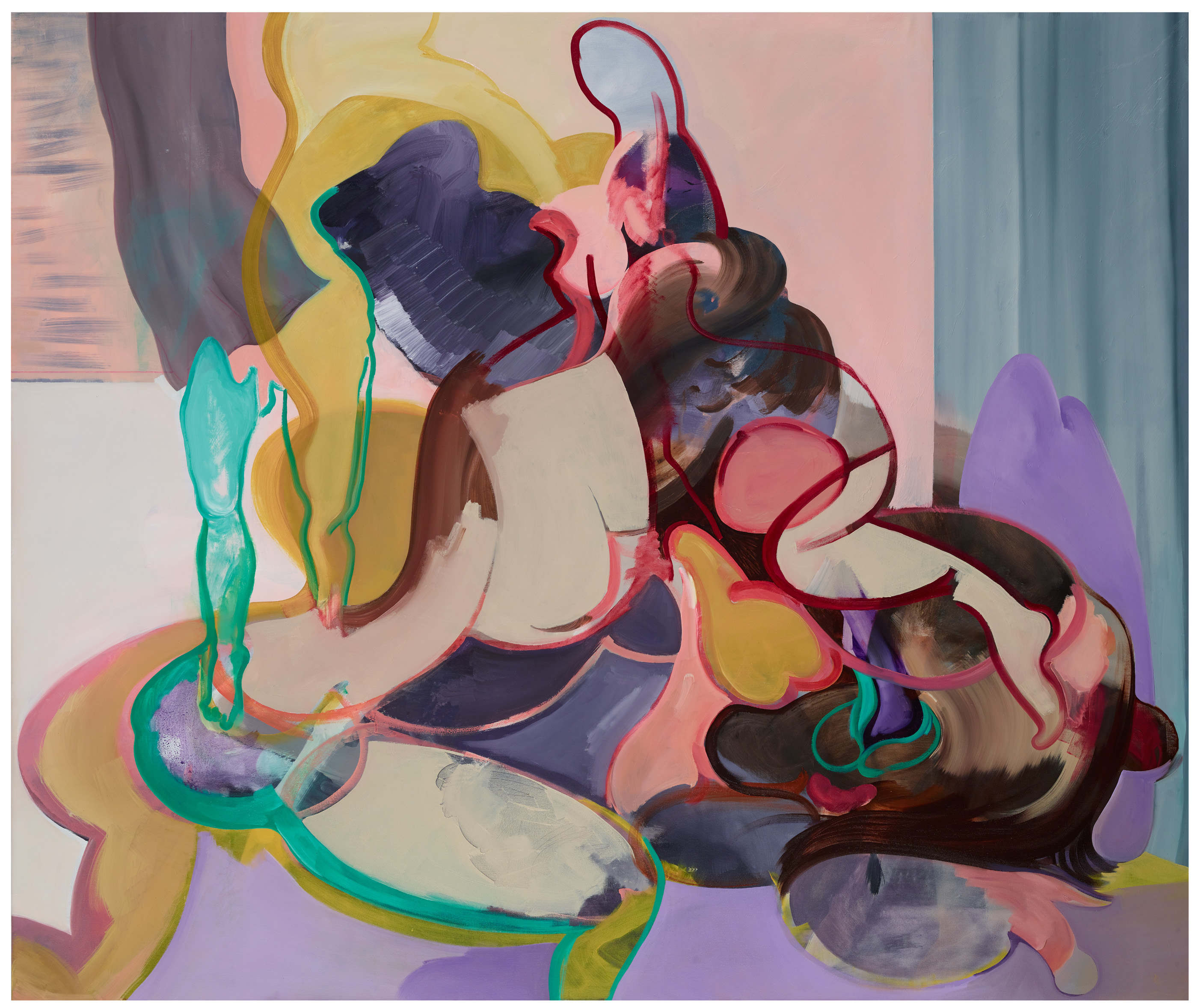
The format of the exhibition is small in comparison to the high ceilings and spacious rooms of the Haus, but yet compact as the Studio fit seven women artists with an overall of eight works.
The Female Gaze opened its doors at Haus am Lützowplatz Studiogalerie in Berlin and gave us a warm welcome on the 4th of May, in the backyard of the impressive neoclassical building. The format of the exhibition is small in comparison to the high ceilings and spacious rooms of the Haus, but yet compact as the Studio fit seven women artists with an overall of eight works. The exhibition at the Haus is the second ‘part’ of a two-part project, curated by Isabelle Meiffert, the first of which opened its doors in Kunst Haus Erfurt on the 6th of April. The project presents eight different positions by seven different artists, positioned within the dialogue of (as the title suggests) body, love and sexuality but in a more playful and experimental way than just in the form of social commentary.
Coming from different backgrounds, the artists pose sincere questions about what it means to be a woman in contemporary society through an ironic – sometimes - mocking prism which calls for a reconsideration of the role and phenomenology of femininity and female sexuality in a world dominated by symbols and images that strive to define it in their own strict terms. With works drawing their inspirations from various sources (social media, childhood memories, classical art history, portrait photography), the artists take a critical position towards the politics of attraction and the female sensuality as the subject of mere voyeuristic desire.
Right when one enters the exhibition space, they come face-to-face with the performative installation Peachness of Elisa Duca who has composed a synthesis of unpredictable materials, typical for the works of Duca who likes placing meaning-charged items in unexpected contexts. The pink-coloured installation carries explicit references of femininity by employing objects used on a daily basis by women; bras, handkerchiefs, latex, nail polish, all are there to compose a predictable image of female sexuality and beauty.
In the same room, on the right and left side of the installation, we meet the works of Sabrina Jung, Juliana Cerqueira Leite & Zoe Claire Miller, Eglé Otto and Anaïs Senli. Jung shows two similar series of works comprising of portraits of women drawing from the portrait traditions of the 40s/50s showing women dressed in conservative outfits but bearing male characteristics on their faces. Jung’s work, Women humoristically address beauty standards and single-dimensional perspectives on femininity which have been supressing women for centuries. Following the same principles in a triptych is another work of hers to be found in the hallway, titled Edith from the series Me, Myself & I (2015-2016).
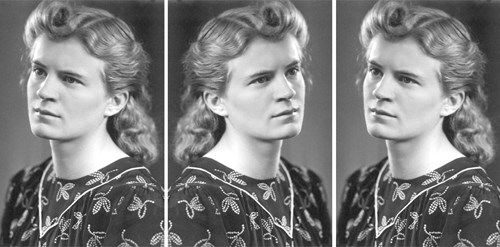
Sabrina Jung, Edith from the Series Me, Myself & I, 2015-16, 3-part, 40x60 cm each, 12 Color - pigment printing, framed. Copyright of the artist
Juliana Cerqueira Leite & Zoe Claire Miller have joined the team with a sculpture, unique in the exhibition space titled A Night with the Girls showing an anthropomorphic body shaped on coarse, uneven gips, where the skin brings to mind decay and a sense of incompleteness. The ‘melting’ body is permeated by pipes, alluding to an intimate, yet fragmented identity of a female body.
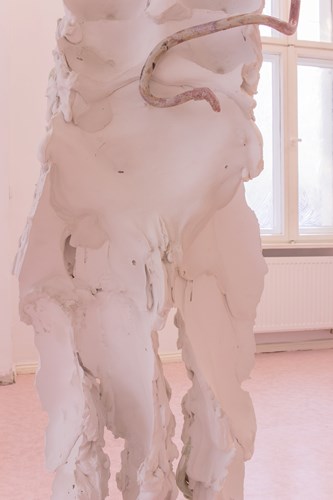
Juliana Cerqueira Leite & Zoë Claire Miller, A Night with The Girls, 2016, 147 x 42 x 28 cm, Plaster, glazed ceramic, metal, wooden base. Copyright of the artist
Eglé Otto is the one offering the unique painting of the exhibition with her work titled o.T., suggesting a way of looking at heteronormativity, and abstract ways of interpreting the body and what is expected of it. By blending body parts with intense colours and a sense of ‘dislocation’, Otto achieves a new imagery of the body which is not necessary based on knowledge but of sensory experience.
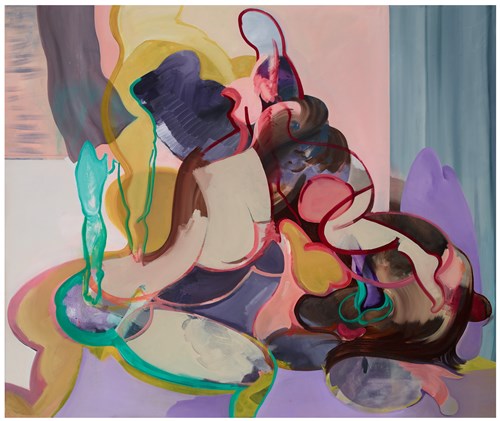
Egle Otto, o. T., 2017, Öl auf Leinwand, Foto: Ralph Baiker, courtesy: the artist and Galerie Mathias Güntner
Anais Senli’s work has a more contemporary digital-age informed messagery by placing an installation where fragmentality is the core of the composition. The installation shows pieces of broken mirror on the ground reflecting projector light on the walls in irregular positions. Causing a sense of disorientation, this 3-part installation is informed by contemporary digital politics and the sense of self and identity as mirrored through the processes of daily self-exposure to social media and online communities. Femininity here acts as a supplementary axe to ask these questions upon which the processes of self-identification and self-determination are based.
When we walk into the inside hallway and final room, we meet the works of Antje Prust and Laure Prouvost. Antje Prust’s video installation, titled Mein Fell Mein Pferd Mein Hase – The Bunny Triptychon draws from the memories of the artist’s childhood and female tenderness. Backed with items from her childhood age and a video showing footage from the artist as an adult dressed in a bunny outfit, the artist questions what the role of being a woman in contemporary society entails as opposed to being a little girl. The aesthetics of the video tend to be purposefully kitsch with a mixture of mythological elements, advertisement-like imagery and eccentric colourful video footage, backed with eye-catching fonts.
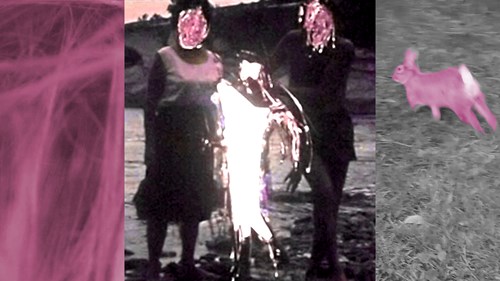
Antje Prust, Mein Fell Mein Pferd Mein Hase – The Bunny Triptychon, 2018, Video, Found Objects. Copyright of the artist
Finally, Laure Prouvost’s large video projection is found in the dark backroom. While most of the works tend to be either critical or sceptical over the social perception of female sexuality, this work does the reverse process and tries to mockingly imitate the male gaze on women which is inevitably paired with lust, sensuality and pleasure. The video work by Prouvost calls upon art historical references by presenting a paradise-like situation where women swim and wander naked in placid waters in a dream-like mountainscape, surrounded by virgin nature. The flux of the video is interrupted in intervals by a pair of blurry, pink lips breathing out as if in intercourse. Prouvost’s work is highly symbolic with a lot of references to the sexual stereotypes the male gaze, media and society have created around the female body and more importantly, the things arbitrarily associated with its sensuality e. g running water, pink lips, flower stems etc.
The Female Gaze – On Body, Love and Sex II
Haus am Lützowplatz, Berlin
4 May-17 Juni 2018
